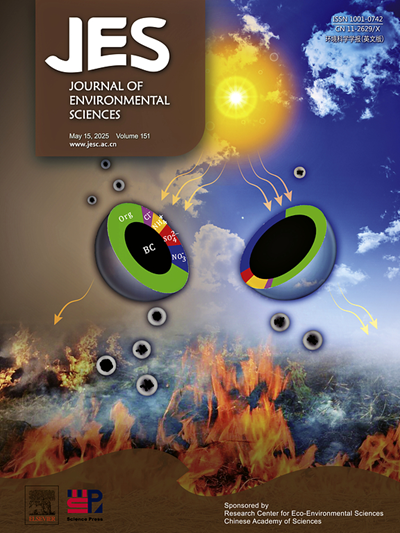Construction of biomass-derived magnetic-recyclable FeNi-LDO@CS to activate persulfate for simultaneous degradation of cationic and anionic dyes: Discrepancy, mechanism and toxicity analysis
IF 5.9
2区 环境科学与生态学
Q1 ENVIRONMENTAL SCIENCES
引用次数: 0
Abstract
In this study, layered chitosan-based magnetic nickel ferrite NiFe2O4/chitosan (CS-LDO) composites were synthesized. The results show that under optimal conditions, 98 % of methylene blue (MB) and 92 % of xylenol orange (XO) can be simultaneously degraded within 120 min in the CS-LDO/persulfate (PS) system, and the removal rates of total organic carbon (TOC) and chemical oxygen demand (COD) can reach 67.32 % and 74.23 %, respectively. In addition, the strong magnetism of the material itself and multiple cycle experiments indicate that CS-LDO has good recyclability and reusability. The results of quenching experiments, electron paramagnetic resonance (EPR) and electrochemical characterization tests demonstrate that the degradation occurred via both radical and non-radical mechanisms. The differing types of reactive oxygen species (ROS) acting and the different electrostatic attraction between the materials and the two dyes lead to a significant difference in the removal effect of two dyes. The degradation mechanism is the redox reaction between Ni2+/Ni3+, Fe2+/Fe3+ and the synergistic effect of Ni3+/Fe2+. Finally, the biotoxicity assessment demonstrated that both the degradation intermediates of mixed dyes and the material itself exhibited low biotoxicity.

求助全文
约1分钟内获得全文
求助全文
来源期刊

Journal of Environmental Sciences-china
环境科学-环境科学
CiteScore
13.70
自引率
0.00%
发文量
6354
审稿时长
2.6 months
期刊介绍:
The Journal of Environmental Sciences is an international journal started in 1989. The journal is devoted to publish original, peer-reviewed research papers on main aspects of environmental sciences, such as environmental chemistry, environmental biology, ecology, geosciences and environmental physics. Appropriate subjects include basic and applied research on atmospheric, terrestrial and aquatic environments, pollution control and abatement technology, conservation of natural resources, environmental health and toxicology. Announcements of international environmental science meetings and other recent information are also included.
 求助内容:
求助内容: 应助结果提醒方式:
应助结果提醒方式:


